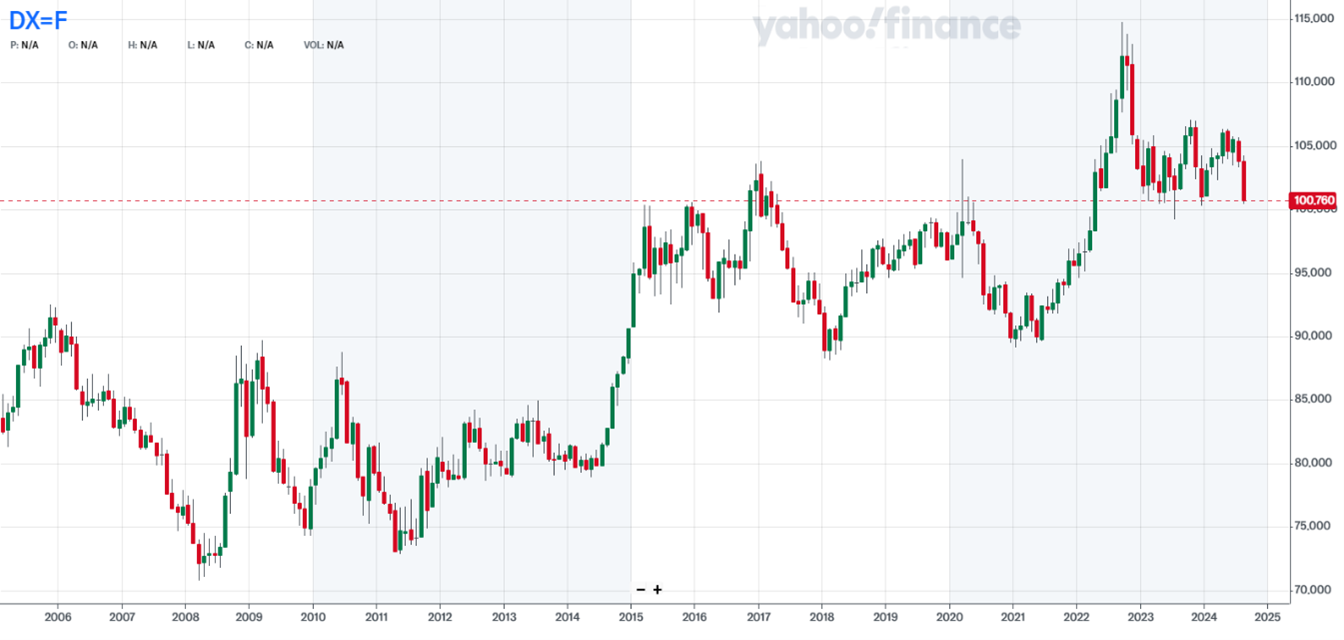Federal Reserve Chairman Jay Powell didn’t equivocate. He didn’t parse his words. Instead, he said clearly and concisely on Friday that the Fed is ready to cut interest rates...and SOON! His specific comments in Jackson Hole, Wyoming were...
“The time has come for policy to adjust. The direction of travel is clear, and the timing and pace of rate cuts will depend on incoming data, the evolving outlook, and the balance of risks.”
Powell’s speech had wide-ranging impacts on many markets. But as you can see in the MoneyShow Chart of the Week below, one of the most significant moves was in the US dollar! This multi-year chart shows the Dollar Index (DXY), a gauge that tracks the greenback’s performance against six major world currencies. They include the euro, Japanese yen, British pound, Canadian dollar, Swedish krona, and Swiss franc.

You can see that the dollar took off to the upside in 2022 as the Fed aggressively raised interest rates. That’s because relative yields are a key currency driver. Higher yields in one country versus another tend to boost the currency of the higher-yield nation relative to the currency of the lower-yield one.
But after moving mostly sideways in 2023 and early 2024, the DXY now appears to be breaking down. Should it fail to hold this 100-101 level, a drop toward 90 could be in the cards.
That creates profit opportunities for currency traders, of course. But it impacts other markets, too. A falling dollar tends to boost commodity prices, including the prices of precious metals. It also typically gives global equities a tailwind.
So if you’re a US-based investor, it might cost you more to travel overseas if the dollar breaks down. But your PORTFOLIO can rack up some nice gains – as long as you’re invested in the right kinds of assets! So, like I keep saying “Be Bold,” buy gold...and now, add some foreign stocks and funds to the mix, too.















